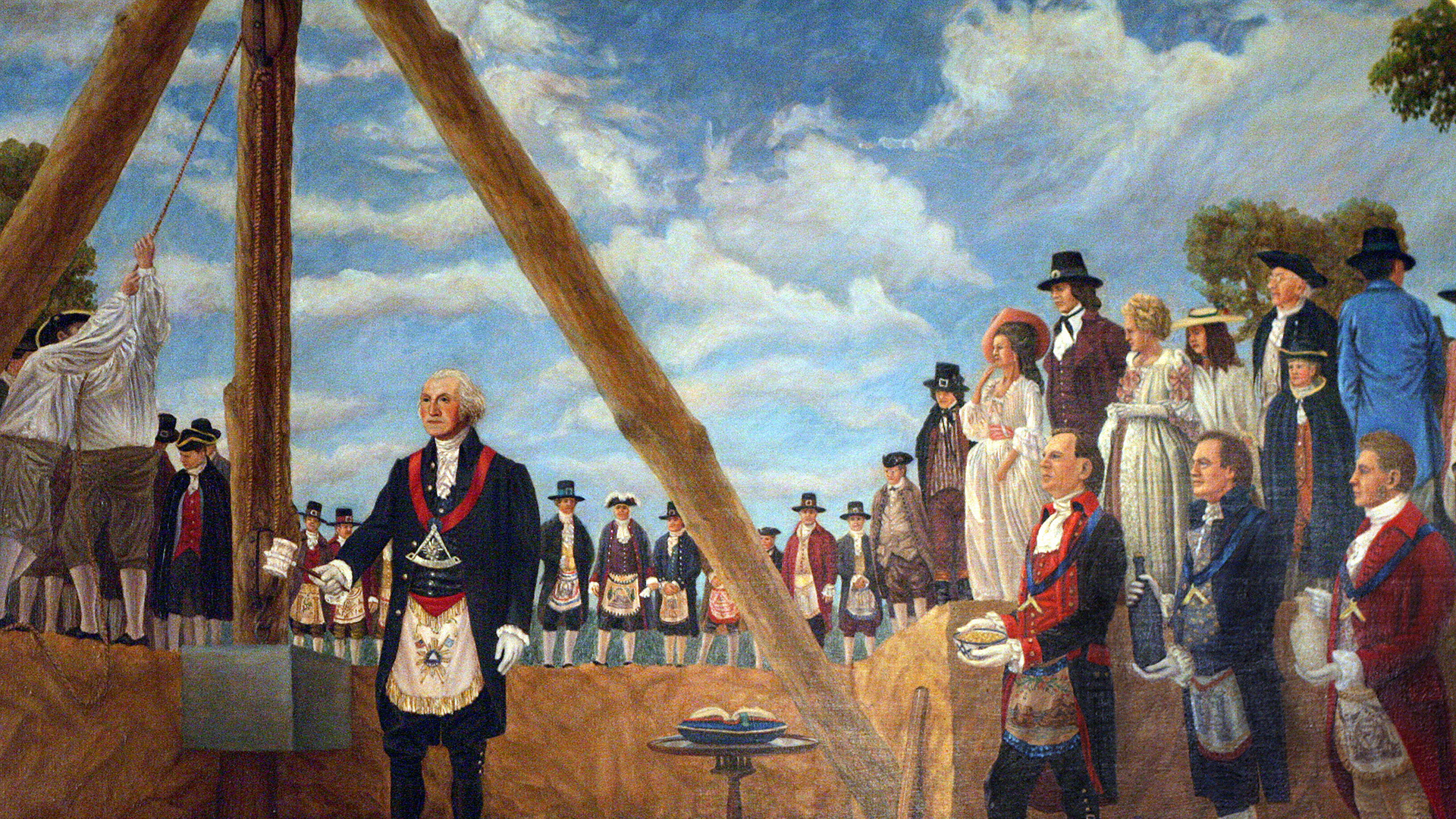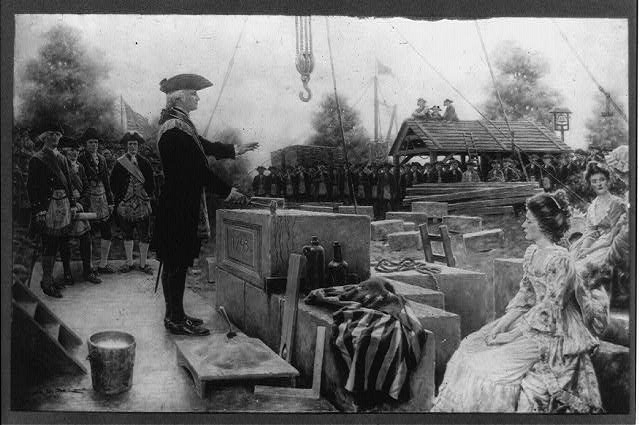George Washington Lays the Capitol Cornerstone

George Washington in ceremonial regalia placing the first stone of the U.S. Capitol building with onlookers gathered around.
What Happened?
In the early years of the United States, Congress didn’t have a permanent home. Lawmakers met in borrowed chambers across cities like New York and Philadelphia while leaders debated where to plant the capital.
The Residence Act of 1790 gave President George Washington the authority to choose a permanent site. He selected land carved from Maryland and Virginia—what became Washington, D.C.—to serve as the federal district.
French engineer Pierre Charles L’Enfant drew up a bold plan for the new city, but clashes with officials ended his role. A design contest followed, and Dr. William Thornton’s neoclassical vision won for the Capitol building.
On September 18, 1793, Washington donned ceremonial regalia and, with Masonic rites, laid the Capitol’s first cornerstone. It was both a literal foundation stone and a symbolic statement: America’s democracy was here to stay.
Construction was slow. The north wing opened in 1800, finally giving Congress a permanent meeting place. The south wing followed a decade later, allowing the House and Senate to move into their chambers.
Disaster struck in 1814 during the War of 1812, when British troops set fire to the Capitol. Only a rainstorm kept the building from being completely destroyed. Congress temporarily met in makeshift quarters until repairs were finished.
By the mid-1800s, the growing country needed a bigger Capitol. Expansions added wings and a new dome—the iconic cast-iron structure we recognize today. During the Civil War, work paused as Union troops used the building as a hospital and barracks.
The Capitol became more than just a workspace. Its art, architecture, and grand design—borrowed from classical Greece and Rome—were chosen to reflect the ideals of democracy, law, and civic duty.
Today the Capitol has over 540 rooms, 850 doors, and even 108 windows in the dome alone. It anchors a complex of congressional offices and libraries, visited by millions each year as both a seat of government and a living museum.
From Washington’s cornerstone to today, the Capitol has been scarred, rebuilt, and reimagined, yet it continues to stand as a reminder that democracy isn’t static—it’s built, tested, and restored by every generation.
Why It Matters
The laying of the Capitol’s cornerstone wasn’t just a construction milestone—it was a declaration that America would center its government in a permanent home. The Capitol remains a symbol of resilience, representing both the fragility and endurance of democracy itself.
?
Why was it important for the U.S. to establish a permanent capital city?
What does the Capitol’s architecture, inspired by Greece and Rome, tell us about the founders’ vision of democracy?
How did the War of 1812 affect the Capitol’s early history?
Why was expanding the Capitol necessary in the 1850s, and what did it symbolize about the nation’s growth?
In what ways is the Capitol both a workplace and a symbol for the American people?
Dig Deeper
From Washington’s cornerstone to today, see how the Capitol was built, burned, rebuilt, and expanded into a global symbol of democracy.
Related

The French and Indian War: The Battle for North America
Before the American Revolution, another great war reshaped North America—the French and Indian War. It began as a fight over land and power, but ended up changing the map of the world and planting the seeds of independence.

American Revolutionary War: From Protest to a New Nation
How arguments over taxes and rights grew into an eight-year war—and how ideas, allies, and perseverance turned thirteen colonies into the United States.

How a Bill Becomes a Law
From idea to law, every bill takes a long journey through Congress—full of debate, revision, and compromise—before landing on the president’s desk.
Further Reading
Stay curious!
